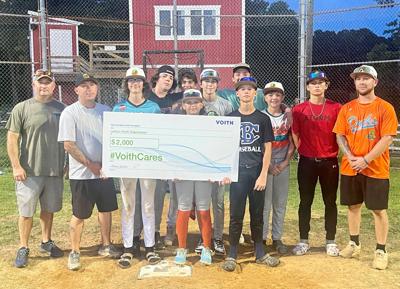2025-07-06Why I’m skipping the iPhone 17: Five reasons you should wait too
MacworldOnce upon a time, Apple used to make significant changes to the iPhone every two years. A new model (iPhone 4, 5, 6, etc) would launch with an overhauled look, followed by an S variant that boosted performance and smoothed out any imperfections. That’s no longer the case. Primarily due to the iPhone’s maturity, iterative annual upgrades have become the norm. After all, there’s only so much it can improve year over year. And despite what you may have read about this year’s phones, the new lineup is looking to be more of the same, even with the introduction of a new Air model. That’s why if you’re planning to get a new iPhone, you may want to wait for next year’s iPhone 18 series. Unlike the iPhone 17, 2026’s lineup is set to bring some of the biggest design and functionality upgrades in years, which could make the iPhone 17 feel decidedly ho-hum.Something in the AirIn September, Apple will reportedly launch the iPhone 17 Air—an ultra-slim handset with a whole new form factor. Exciting, right? Maybe not. First-generation devices are often riddled with flaws, and a year later, the iPhone 18 Air will almost certainly address any issues with a refined and polished design.Beyond that, there seem to be few compelling reasons to opt for an iPhone 17 Air. The sleek device will likely have a mediocre battery life, a single rear camera, fewer speakers, and other compromises for a premium price tag. With most people popping their phone into a case anyway, will a super-slim iPhone really be worth it?Now that the EU has confirmed that Apple is permitted to release portless smartphones, the iPhone 18 Air could potentially take advantage of that. The end result would be a lighter, incredibly thin iPhone that, unlike the 17 Air, may justify the shortcomings and expense. The iPhone 17 Air might be super-thin, but that’s nothing compared to a folding model.FoundryAbove the foldWe’ve been hearing about a folding iPhone for years, but it finally seems like it’s coming. But not this year. In 2026, Apple is expected to debut its first foldable smartphone (enter the iPhone 6 Plus joke here), rivaling Samsung’s Galaxy Z Fold and changing the iPhone as we know it.The 5.5-inch device is rumored to pack a 7.8-inch inner display, mimicking an iPad mini when opened. It would easily be the most dramatic and exciting iPhone change since the iPhone X in 2017, and many Apple fans are going to want to jump on board as early adopters.Lens flairEven if you’re skipping the iPhone 17 Air and its single camera, the iPhone 17 Pro isn’t looking to deliver much in the way of meaningful camera upgrades, other than a 24MP front-facing sensor and a 48MP telephoto lens. However, a more substantial camera boost could arrive next year. At least one iPhone 18 model (presumably the Pro Max) will boast a variable aperture lens—a perk long limited to high-end professional cameras.If true, iPhone users will get to mechanically control how much light reaches the sensor for the first time. This could elevate portrait shots by improving the applied depth of field effect, as well as minimizing overexposure. Most smartphone users don’t rely on a dedicated DSLR or mirrorless camera for capturing their everyday moments. Porting a variable aperture lens to the iPhone could dramatically enhance the photo-taking experience.The iPhone 17 Pro’s camera will be very good, but the real big changes are rumored to be coming next year.FoundryA cut aboveApple introduced the Dynamic Island with the iPhone 14 Pro, and it’s quickly become one of the handset’s best features, with quick access to timers, scores, background tasks, and so on. But when it’s not in use, it’s still somewhat unsightly—and that’s not expected to change this year. Next year, however, Apple will reportedly switch to under-display Face ID sensors, which will likely shrink the Dynamic Island noticeably. The conflicting reports make it hard to predict whether the iPhone 18 Pro will feature a smaller Dynamic Island or a hole-punch design, but it’s safe to assume it’ll look more futuristic and bring the iPhone a step closer to the flawless, glass slab vision coming in 2030.Chip shiftFor many casual users, Apple’s annual chip upgrades aren’t all that important. iPhones from years ago still run fluidly and perform in a lag-free manner, and a slightly faster processor won’t really impact the daily experience meaningfully. However, there may be a bigger boost with the iPhone 18 models.In 2026, Apple is expected to unveil the A20, switching from a 3nm to a 2nm manufacturing process. As a result, the iPhone 18 Pro models could be significantly more capable and power-efficient. But that’s not all—the iPhone 18 lineup is also expected to adopt the second generation of Apple’s in-house 5G modem. Unlike the C1 predecessor included with the iPhone 16e, the C2 chip could support mmWave connectivity and bring other enhancements to the table. With the iPhone 17 line likely sticking to Qualcomm’s hungrier modem and 3nm A19 processor, it’s safe to assume the iPhone 18 will have a superior battery life.Next year’s iPhone lineup will likely have Apple’s second-generation modem.FoundryIteration now, innovation laterIn just 12 months, Apple’s iPhone 18 series will likely offer some of the most distinct changes in ages. We’re rumored to be getting an all-new folding form factor that caters to multitaskers, along with a potentially improved Air model as well as other significant enhancements.Meanwhile, what will the iPhone 17 bring? A thin body? A tweaked rear camera bump and a price hike? We think you’ll be better off buying a discounted iPhone 16 and waiting till 2026 to get something really new.








































































